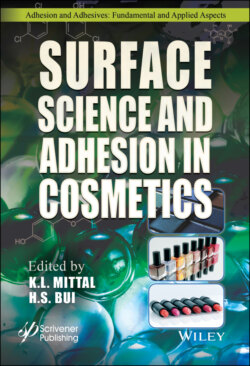Читать книгу Surface Science and Adhesion in Cosmetics - Группа авторов - Страница 27
1.3.3 Visual Properties of Lipstick Formulations 1.3.3.1 Transfer Resistance Test
ОглавлениеThe transfer resistance test, also known as the “kiss” test, is a commonly used evaluation method in order to determine the transfer of product from the lip after lipstick application. This provides an indication as to what may be experienced by consumers in terms of transferring color to undesired places such as glassware, clothing, silverware, or other lips [3]. Not only does this issue result in color appearing in unwanted locations, but it also ruins the appearance of the consumer’s lips, resulting in an uneven coating of the lipstick. This method is an effective way to rank the transfer-resistant ability of long-wear lipsticks.
Figure 1.8 DSC profiles of lipstick formulation samples A-D [61].
The formulation is applied to a keratinous material, such as the human lips, and left to dry for about fifteen minutes. After this time, another substrate such as skin, artificial skin, lips, or glass is kissed. The amount of formulation transferred to the substrate is reviewed and ranked on a scale from little or no transfer to complete transfer. Should the formulation be transfer-resistant, then a majority will remain on the lips [4].
Figure 1.9 demonstrates the results from the kiss test by a sensory panel. In this study, lipstick was applied to a consumer panel in order to confirm the lastingness of the lipstick being investigated; after drying, four prints were made on a piece of white paper [58]. As seen in Figure 1.9, Formulation A had a much larger transfer amount compared to Formulations B and C; therefore, one could conclude that Formulation A is not as transfer-resistant.
Such studies help identify key differences between formulations and the impact these components have on durability, transfer, and lastingness. For example, the study above indicates the impact that the wax, butter, and copolymer type have on performance [58]. Not only does this information help formulators further optimize their compositions, but it also helps in regards to comparisons with competitor products. This method is a relatively quick and efficient way to help identify transfer in ideal conditions, without the influence of water or oil.
